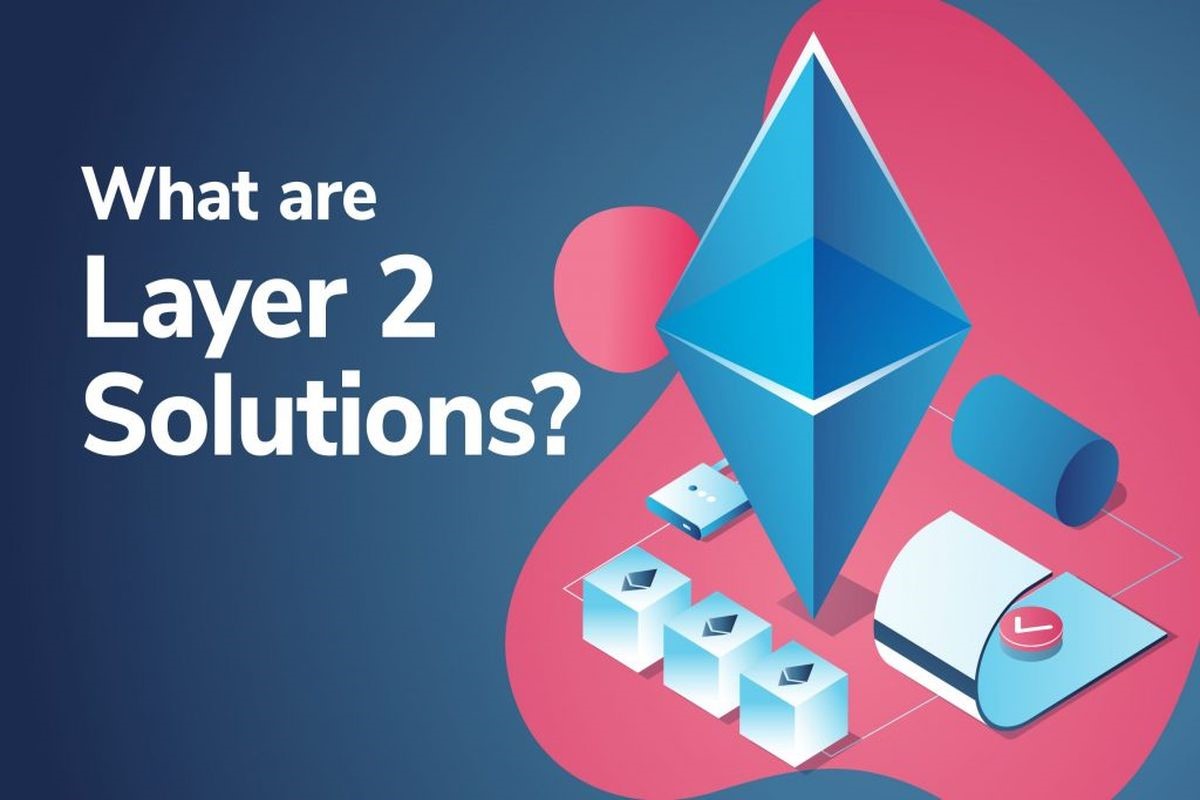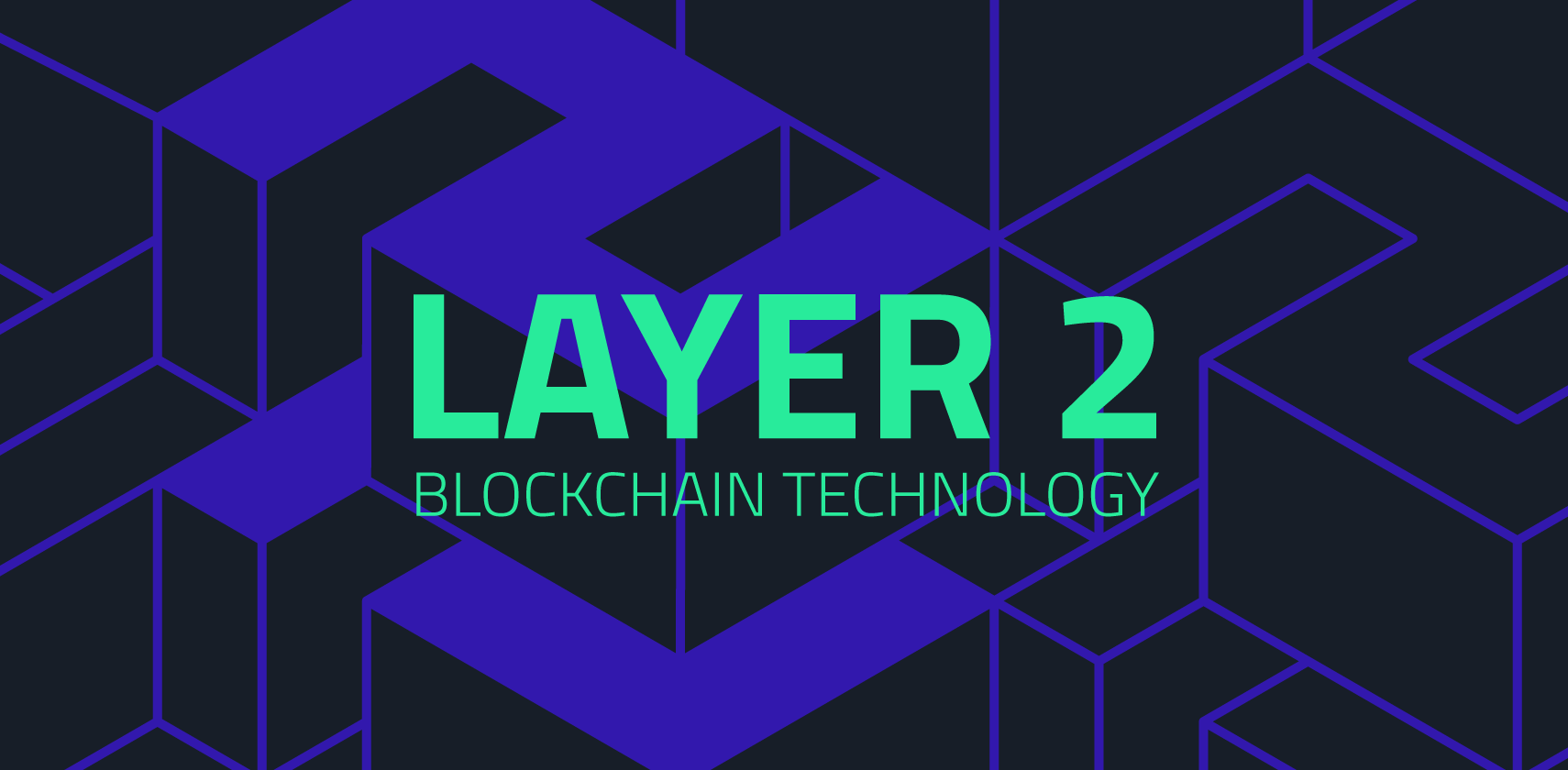Blockchain’s explosive growth is on as the entire ecosystem strives to create scalability solutions that meet the demands of the users without sacrificing decentralization or security. The layer 2 scaling solutions are brought in to resolve the classic blockchain trilemma issue.
In recent years, there has been rapid growth in nonfungible tokens (NFTs), decentralized finance (DeFi), and gaming. The massive growth and adoption have, in turn, caused congestion in the Ethereum network. That scenario has resulted in bottlenecks and significantly high transaction fees given that the network processes just a few transactions every second, rendering most of the dApps unusable sometimes.
Ethereum’s shift to a proof-of-stake sharded network may resolve some of the pressures that affect layer 1, with sharding dividing the Ethereum network into new shards or chains to spread the general load, hence reducing congestion and increasing the transaction speeds.
Nevertheless, since full deployment seems to be several years away and participation does not show any signs of slowing down, the need for scalable solutions has increased the rate of adoption of layer 2 scaling solutions that operate on to of Ethereum’s layer 1, instead of trying to enhance performance at the ground layer.
Layer 2 solutions and related technologies resolve various issues that affect Ethereum scaling, with each of them coming with benefits and shortcomings. These solutions include Validium, Plasma, Aggregators, Sidechains, ZK-Rollups, Optimistic Rollups, together with State Channels and Payment Channels.
Related:One Small Step for zkTube, One Giant Leap for Layer 2
Plasma
Plasma Chains are separate blockchain networks designed to anchor to Ethereum. They are sometimes referred to as child chains since they operate mainly as smaller copies of the Ethereum mainnet. In most cases, these child chains utilize an integration of cryptographic verification and smart contracts to offload transactions entirely from the parent chain.
Each of the Plasma chains comes with a unique mechanism for block validation and they often report back to the Ethereum main chain, using their security to settle disputes whenever they are challenged through fraud proofs.
These plasma chains are designed to support high throughput at low costs per transaction. Nonetheless, just the basic transactions like token transfers and swaps are supported, there is a growing liveliness need, and chain withdrawals can be quite long to bring in various challenges.
Many projects offer implementations of Plasma for dApp combination, including OMG Network and LeapDAO.
Sidechains
These Layer 2 solutions are independent Ethereum Virtual Machine (EVM) compatible blockchains. The sidechains run in parallel to the Ethereum main chain. All validator nodes in the sidechain network are responsible for the confirmation and processing of transactions, adding blocks, and maintaining the sidechain’s consensus rules like delegated proof-of-stake and proof-of-authority, to deliver highly efficient transactions.
Compatibility is acquired through a two-way bridge to Ethereum, although this platform’s security is not fully inherited and it is the responsibility of the sidechain.
Related:Alex Shevchenko- Aurora Labs CEO talks to us about NEAR’s Ethereum Virtual Machine
Sidechains use established technology and support highly complex transactions with EVM compatibility. However, they are less decentralized and rely mainly on their consensus mechanisms instead of the security offered by layer 1. Hence, they are not technically layer 2 scaling solutions in that sense.
The projects offering sidechain implementations include the xDai chain and POA Network.
State Channels and Payment Channels
One of the first majorly discussed layer 2 scaling solutions, state channels utilize multi-signature contracts to allow participants to transact rapidly and frequently off-chain, settling to layer 1 for finality as needed.
State channels manage complex interactions like a game, while payment channels are just simplified state channels that deal with payments between two participants. They allow for high transaction throughput at a low cost, making them perfect for micropayments.
Nonetheless, the cost and time to set up and settle channels are not perfect for one-off payments, liveliness is needed, and funds need to get locked up in open payment channels. The biggest projects leveraging state channels on Ethereum are Perun, Celer, and Raiden.
Optimistic Rollups
Optimistic rollups operate in parallel to the Ethereum main chain offering layer 2 scaling solutions. They ensure that transactions are executed scalably and cheaply in batches away from layer 1 while using the security offered by the Ethereum base layer when submitting them as one transaction.
Since computation is the slow and expensive element of the Ethereum network, the optimistic rollups deliver up to 100 times scalability enhancements because they do not run computations by default, and the number is expected to increase in the coming years with the introduction of Ethereum Sharding.
However, optimistic rollups assume that transactions are valid and simply run computation when challenged through fraud-proof. In most cases, optimistic rollups use a bonding network, and anyone who is proven responsible for illegal and fraudulent transactions or challenges will forfeit their bond with some of their resources slashed and some used to help in incentivizing the correct party.
Optimistic rollups can handle everything done on Ethereum layer 1 since they are EVM and Solidity compatible. Since all transaction data is stored on the layer 1 chain, optimistic rollups are decentralized and secure. Concurrently, they are offering efficient execution scalability. Nonetheless, the long wait times for on-chain transactions are possible as a result of the possible fraud challenges.
Interestingly, optimistic rollups support simple payments and complex smart contracts. Therefore, they are seen as more instantly suitable for decentralized finance applications, with Arbitrum, Optimism, and Cartesi among the many projects that provide implementations.
The largest DEX platform Uniswap, while pointing towards the future of this space, recently said that it would soon adopt layer 2 solutions by launching on Optimism to steeply reduce the transaction costs for the users.
ZK-Rollups
Zero-knowledge rollups (ZK-rollups) bundle the transactions off-chain and generate an authentic cryptographic proof that is known as SNARK. On the contrary, too optimistic rollups, ZK-rollups operate computation off-chain and submit the validity proofs to the layer 1 chain.
ZK-rollup smart contracts maintain the state of every transaction on layer 2 solutions that can just be updated using validity proof. Since the ZK-rollups need the validity of proof instead of all the transaction data, authenticating a block is quicker and cheaper since it comprises fewer data and needs less gas.
Furthermore, since the ZK-rollup contract has already authenticated the transactions, no delays exist in the movement from layer 2 to layer 1.
As a result, the ZK-proofs deliver quick finality times while remaining highly secure and decentralized because the data required to recover the state is stored on the Ethereum layer 1 network. Nevertheless, some of the ZK-rollups have no EVM support, and authenticity proofs are highly intensive to compute, which makes them unsuitable for decentralized applications with minimal on-chain activity.
Many ZK-rollups implementations also exist, including ZKSwap and zkSync. Notably, zkSync provides a trustless protocol for scalable and low-cost payments on Ethereum using ZK-rollup technology. Thus, it helps crypto wallets and decentralized finance platforms to unlock a PayPal-like scale. ZKSwap is designed to offer a ZK-rollups-based layer 2 solutions DEX with zero gas fees and high-transaction throughput, changing the future of the AMM model.
Harmony’s interoperable layer 2 solutions for Ethereum provide something more distinct, integrating the best both the optimistic and ZK-rollup spaces. Harmony offers full EVM compatibility, unlike the ZK-rollups. It also offers quicker settlement with smaller withdrawal times when compared to the Optimistic rollups, and gas-efficient interoperability according to its sharded Proof-of-Stake (PoS) blockchain that links to Ethereum through smart contracts.
Harmony is building on the strong points that come with both ZK-rollups and Optimistic rollups, mostly considered to be the best and most promising of all available layer 2 solutions. Harmony addresses their shortcomings and offers a wholescale solution for different blockchain projects to deploy. The platform’s interoperability also expands beyond Ethereum with its Horizen Bridge to Binance Smart Chain, creating access to the wider DeFi space.
Validium
The platform uses validity proofs like ZK-rollups, although data is not stored on Ethereum layer 1, supporting scalability of up to 10,000 transactions every second per Validium chain, of which many can run simultaneously.
Validium does not offer any withdrawal delays. Instead, it enhances capital efficiency and it is not vulnerable to various economic attacks that are faced by the high-value dApps using fraud-proof-based systems. Nonetheless, Validium chains have limited smart contract support.
The notable projects that offer implementations of Validium include StarkWare and Loopring. Immutable X is one of the first layer 2 solutions for NFTs on Ethereum, uses StarkWare’s Validium and ZK-rollup technology to support transaction speeds of more than 9,000 per second with zero gas fees while retaining ETH’s security for its network of marketplaces, applications, and games.
Aggregators
Polygon works as an aggregator of the available layer 2 scaling solutions, providing many implementations of different layer 2 technologies. As a result, Polygon has now become the fastest-growing layer 2 solutions, introducing blockchain technology to the masses by opening up the usability, accessibility, and use cases of decentralized applications (dApps) on ETH’s internet of blockchains.
Related:A Deep Dive Into The Polygon Network
Polygon’s suite of layer 2 scaling solutions and scalability has witnessed the adoption from decentralized finance blue chips, with the platforms like SushiSwap, Aave, and 1inch already integrating with it.
CVI is a decentralized volatility index for the cryptocurrency space powered by the COTI network, has also followed this lead in integrating with Polygon. The CVI users can open positions, offer liquidity and stake, while processing transactions out of the main Ethereum blockchain.
Layer 2 Scaling Solutions Takeaway
There is no single scaling solution that is enough to fulfill the secure, decentralized, and scalable vision of Ethereum 2.0, avoiding the issues of bottlenecks and high fees. Sharding will help on-chain scaling on layer 1 networks, but off-chain layer 2 solutions that can readily customize to adapt to the unique requirements acceptable trade-offs of the assortment of dApp projects being created are integral to the future of blockchain.
The general ecosystem is bigger than the sum of its parts, and various layer 2 scaling solutions can exist and operate in harmony to respond to the growing demands of mainstream adoption. Thus, the help in reducing congestion and preventing the single points of failure as the world moves to the Web 3.0 domains.









